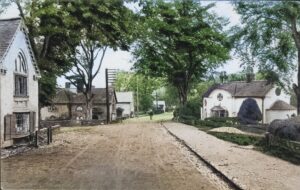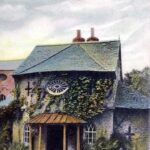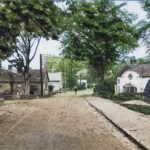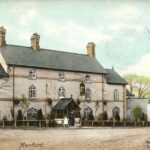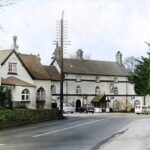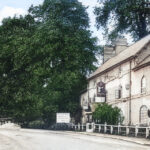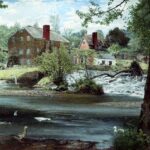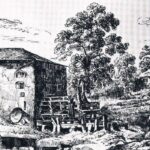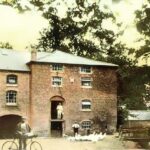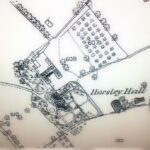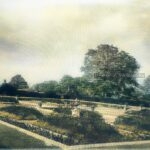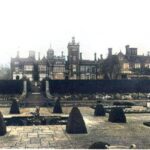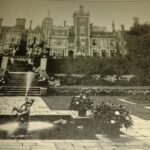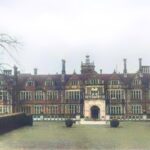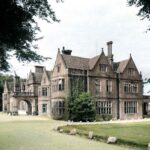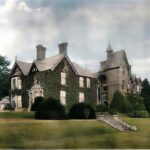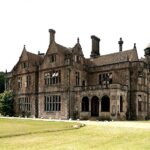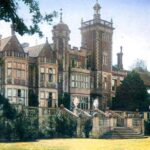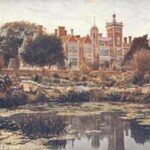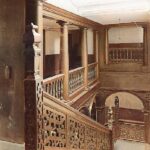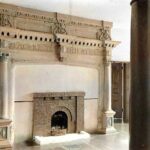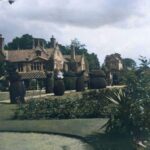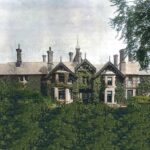Marford
Plas – yn – Horsli or commonly known as Horsley Hall has records back to the time of William the Conquerer. The Doomsday book mentions Horsley but the Norman surveyors called it Odeslie and recorded the area as one ‘Carucate’ , formerly as much land as one team of oxen could plough in a year , about 240 acres and worth three shillings. In 1272 the area and land of Horsley was in the occupation of the Baron of Malpas a knight named Urien de Sancto Petro. A century later in 1371 the land of Horsley came into possession of a man named Jeuan ap David ap Margod , son of David Hen of Burton. It is believed that this was the time of the first house on the Horsley land to be built by Ap Margod , as centuries past the area of Horsley passed to a decendent of ap Margod named Thomas Powell , who was the first of perhaps eight generations who went by that name and who was Constable of Holt Castle, and is believed to have built ‘Plas y Horsli’ in around 1540, a timbered building with a moat around it.
Horsley Hall was purchased by Frederick Potts, land agent to the Duke of Westrninster, between 1856 and 1866. It is generally claimed that around 1875 Potts constructed a new house on the site. It is reported by Palmer that Potts demolished most of the old moated hall including a ‘groined crypt in order to alter the entrance to his new hall , and also retained a fine stone 16th or 17th-century fireplace . Like its smaller predecessor, the new house, of red brick with stone dressings, lay along the contours on a north-west/south east alignment. It faced south-westwards towards the rising ground of Marford Hill. In front of this was a wide drive. A stable block and ancillary buildings lay immediately to the north.
In 1898 Potts’s son sold the hall and the house was remodelled In Jacobethan style and much enlarged. Lord Wavertree purchased Horsley in 1917 and made further changes to its design, and also added formal terraced gardens in front of the hall, including the service wings and stables. The building was sold in 1934 and intended for demolition, However at the commencement of the Second World War the Army acquired the site and the hall and its accompanying gardens were modified with Nissen huts, garages and military buildings added to it landscape. The Army finally vacated the site in 1955 and then, for a short period, it became a private school. Most of the hall itself was finally demolished in 1963 and the ancillary buildings were abandoned in ruins and the gardens overgrown.

